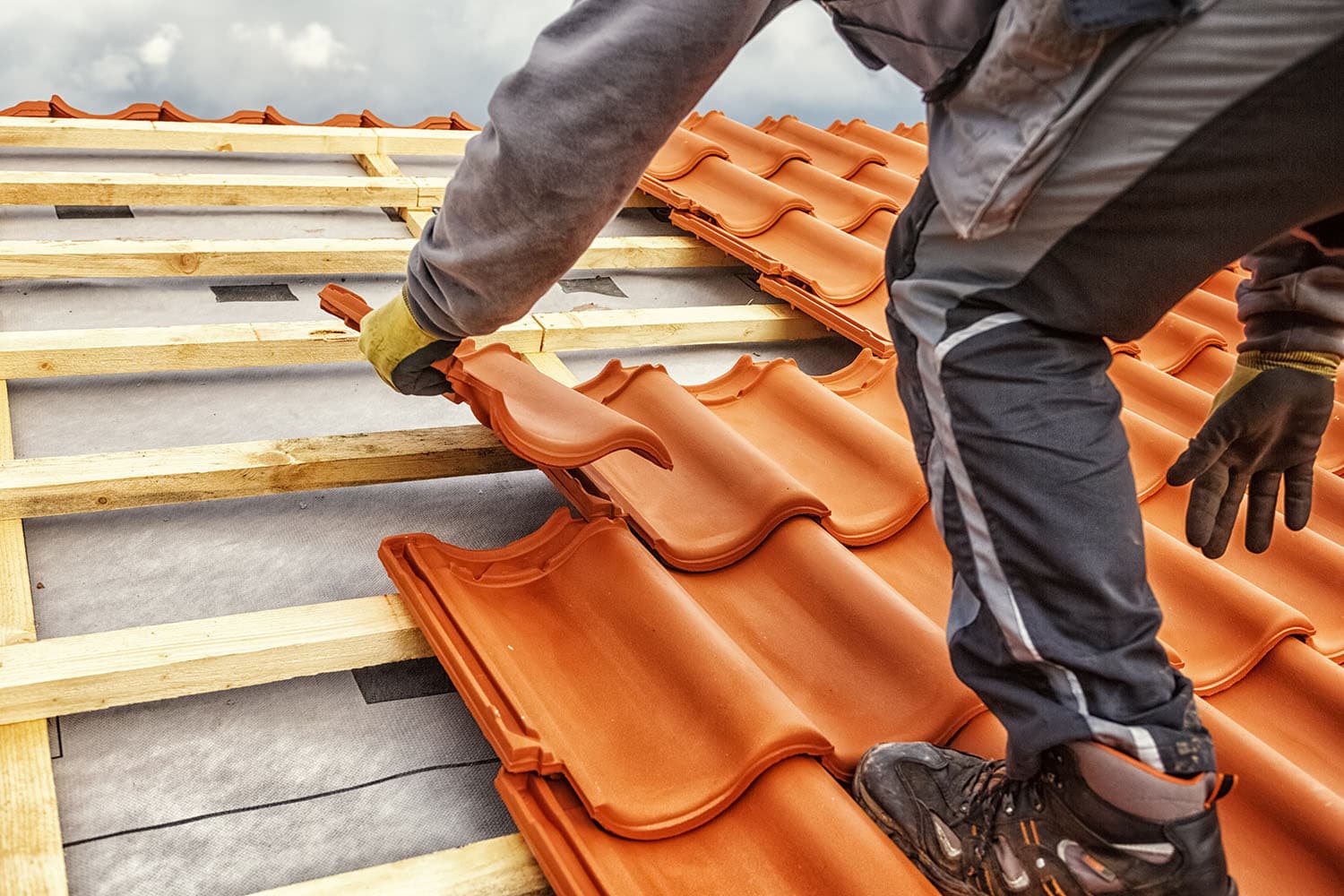Get top-quality materials and craftsmanship from a licensed Toledo Roofer.
Get top-quality materials and craftsmanship from a licensed Toledo Roofer.
Blog Article
Just How to Evaluate Different Roof Options for Your Structure Requirements
Examining roof covering options for your building requires a thorough approach that thinks about numerous factors such as the intended use of the structure, regional environment problems, and material attributes. It is vital to weigh the benefits and downsides of various roof kinds, from asphalt shingles to steel and clay floor tiles, while also considering first prices and long-lasting upkeep. Additionally, understanding energy performance and visual charm can influence your decision. As you contemplate these considerations, one concern stays: which variables will ultimately direct your selection for a lasting and visually pleasing roof covering service?
Assessing Your Building's Demands
To successfully assess roofing choices, start by thoroughly evaluating your structure's needs. Beginning by thinking about the building's planned use, as different frameworks may require varying roofing specifications. As an example, residential roofing systems frequently prioritize aesthetics and insulation, while business buildings might concentrate on durability and load-bearing ability.
Next, assess the neighborhood environment conditions that will certainly influence roof covering performance. Factors such as temperature level variations, precipitation levels, and wind patterns can affect material selection and style. A roof that masters a pleasant climate might not perform as well in areas prone to heavy snowfall or extreme warmth.
Additionally, analyze the structural integrity of your building. Ensure that the existing structure can sustain the chosen roof covering products, particularly if taking into consideration much heavier options. It is likewise vital to examine any kind of neighborhood structure codes or guidelines that may determine specific demands for roof.

Contrasting Roof Products
As soon as a detailed analysis of your structure's needs has been finished, the following action includes comparing numerous roof covering materials. Each material uses unique benefits and disadvantages, making it vital to align your option with your details demands and situations.
Asphalt tiles are commonly acknowledged for their price and ease of installment, making them a popular alternative for residential buildings. On the other hand, steel roof, recognized for its sturdiness and long life, can hold up against severe weather however may come with a higher first investment.
Clay and concrete ceramic tiles offer exceptional thermal insulation and aesthetic appeal, specifically for Mediterranean-style architecture, yet they call for an even more robust structural assistance because of their weight. Timber drinks offer a natural appearance and great insulation properties yet might demand more maintenance and are at risk to fire risks.
Examining Expense and Budget
Evaluating your roofing alternatives demands a cautious analysis of cost and budget considerations. see this The overall budget for a roofing project comprises several elements, including material costs, labor expenses, upkeep, and possible long-lasting cost savings. It is necessary to establish a clear budget prior to checking out details roof products, as this will certainly lead the decision-making process and help you stay clear of overspending.
Begin by obtaining quotes from numerous professionals to recognize labor prices in your area. Guarantee that these quotes consist of all essential solutions, such as removal of the old roof covering, installation, and any kind of extra features, like insulation or air flow renovations - Toledo Roofer. Next, assess the expense of various roof materials, taking into consideration both initial installment prices and expected life-span

Recognizing Power Performance
Power performance plays an important role in the choice of roof products and systems, substantially influencing both energy consumption and total convenience within a structure. A well-chosen roof can improve thermal performance, lowering the requirement for home heating and cooling systems, which consequently reduces power costs and minimizes ecological impact.
When evaluating roof covering choices, consider materials that mirror instead than soak up warm. Light or reflective roofing products can significantly reduce roofing surface temperature levels, resulting in lower power use throughout hot months. Additionally, correct insulation and air flow are vital to enhance the energy effectiveness of the whole roofing system. Insulation avoids warm transfer, while ventilation reduces warm accumulation in the attic space.
Another vital variable is the roof's longevity and upkeep needs. Sturdy materials that need less regular replacement add to lasting energy financial savings. Additionally, the energy performance of a roof can likewise be assessed with its conformity with established sustainability rankings such as power CELEBRITY or LEED.
Thinking About Aesthetic Allure
A roof covering's aesthetic charm dramatically affects the overall appearance of a building, enhancing its building design and improving aesthetic allure. Roofer. When evaluating roof covering options, it is vital to consider just how the selected product, color, and style will certainly balance with the existing framework and community. A well-designed roof covering can boost even the most basic of structures, transforming them into visual focal factors
Various roof covering products offer different aesthetic high qualities. Traditional shingles may stimulate a traditional appeal, while steel roofing can present a modern, sleek look. Furthermore, the shade of the roof product plays an essential function; lighter shades can make a structure show up even more large, while darker tones might create a cozier atmosphere.
Furthermore, architectural elements, such as dormers and eaves, can enhance the roofing system's visual effect. It is advisable to speak with specialist developers or designers to guarantee the selected roof option straightens with the general style intent. Ultimately, a roof needs to not just offer useful advantages however additionally add positively to the building's visual, showing the owner's preference and the personality of the surrounding atmosphere.
Final thought

Report this page